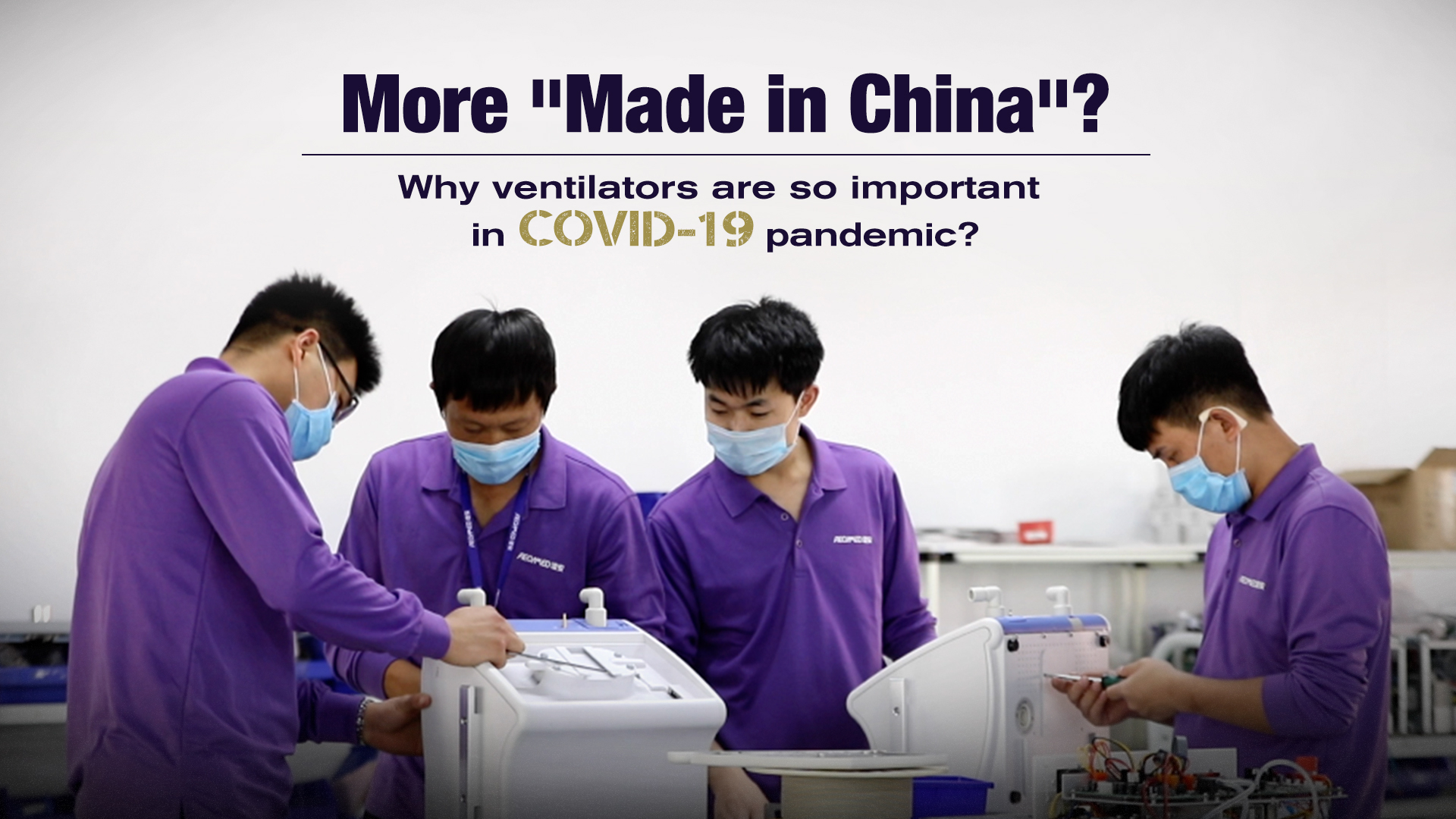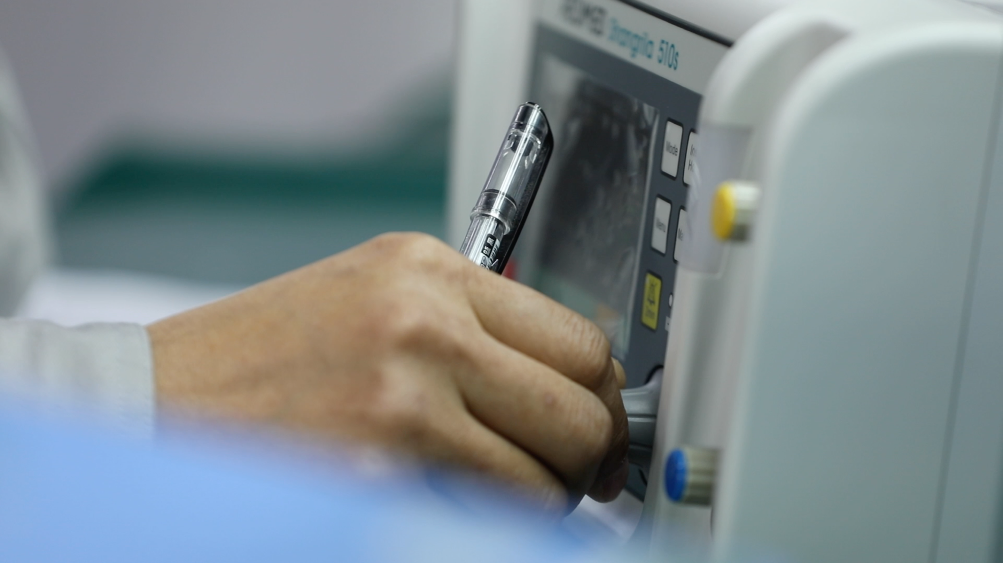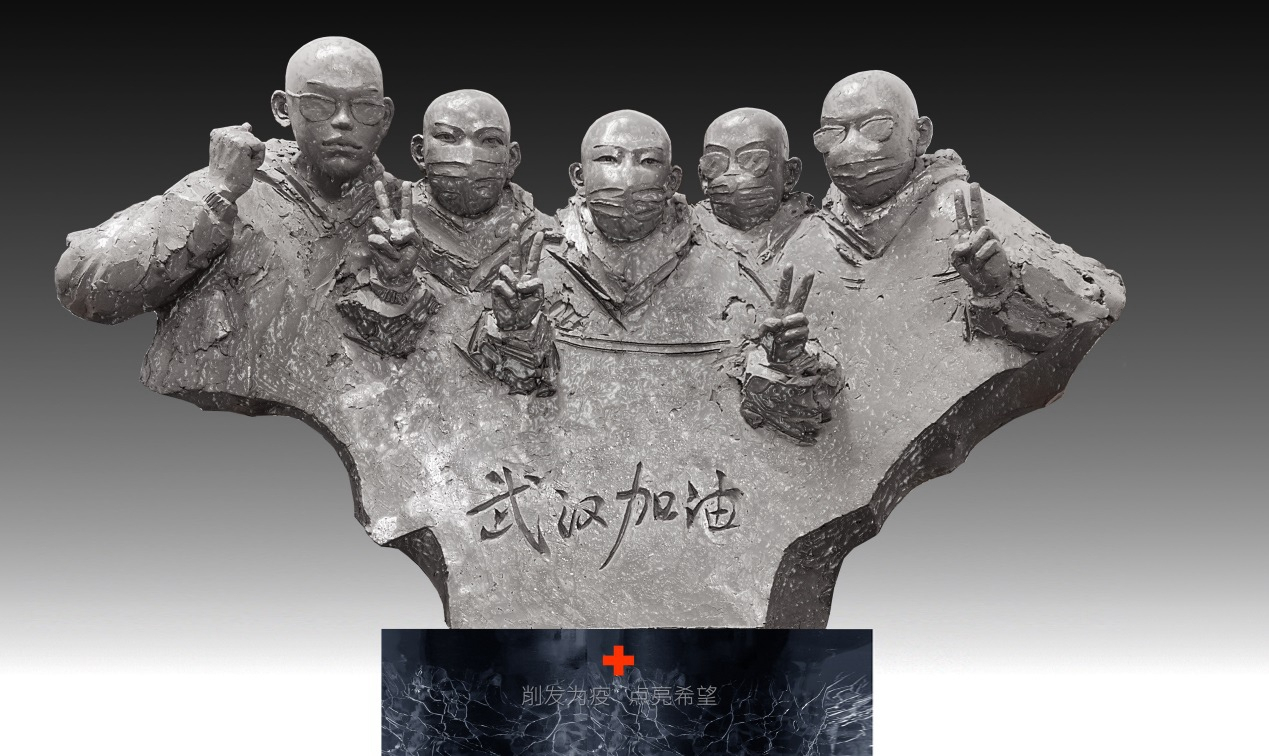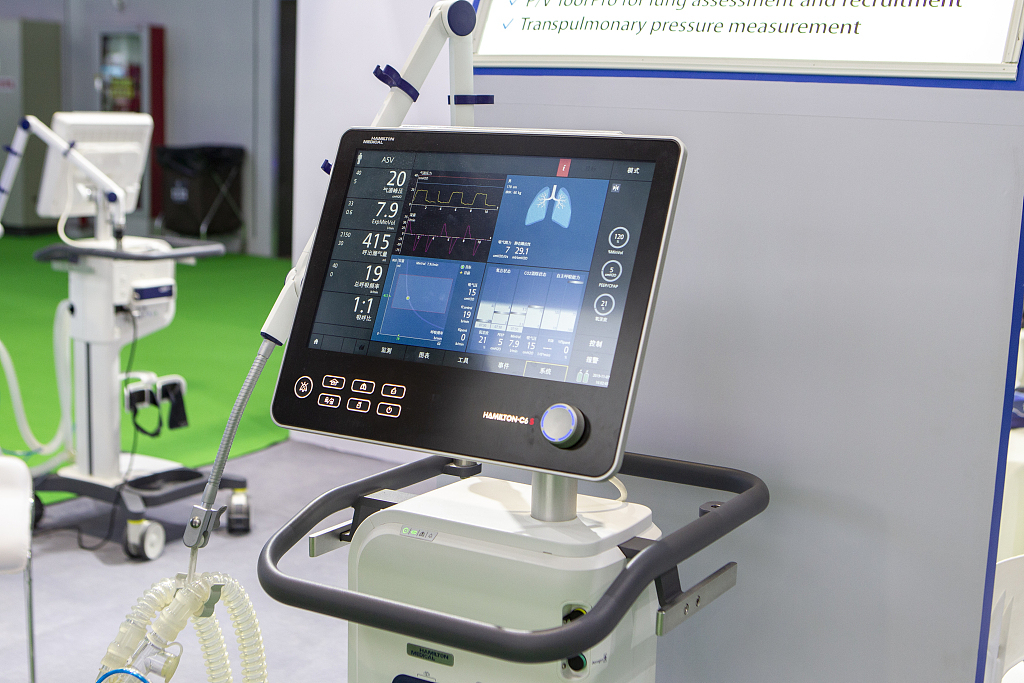With the number of global COVID-19 cases topping 2.5 million and countries scrambling for medical supplies, ventilators are in great demand, and sometimes jurisdictions within one country are competing with each other for it.
According to GlobalData, a data and analytics company that specializes in medical transaction and clinical information, about 880,000 ventilators are required globally amid the COVID-19 pandemic. Meeting such high demands, 18,000 ventilators from China were exported to other countries, said Chen Kelong, deputy director of the Department of Equipment Industry of the Ministry of Industry and Information Technology (MIIT), at a press conference earlier this month.

Employees assemble ventilators at a plant in northern China's Hebei Province. /CGTN
Employees assemble ventilators at a plant in northern China's Hebei Province. /CGTN
Importance of ventilators
What is the significance of ventilators in treating COVID-19 patients? Dr. Li Zhouli, former chief physician at 309th Hospital of People's Liberation Army of China, told CGTN they are important "because we need to maintain patients' blood oxygen saturation."
"If we classify the COVID-19 infected patients into 10 degrees, the zero-degree patients would be the ones with no symptom or sign of infection," said Dr. Li. "Nowadays, we are talking about asymptomatic patients, who could also be categorized as zero-degree, but with a positive nucleic acid testing result."
Lower-degree patients are the ones with mild symptoms. They might experience flu-like symptoms, and what they need to do is have enough rest, go into self-isolation and undergo medical treatment when necessary.
When the severity reaches seven or eight, and the patients become critically ill, this is when ventilators come in. The machines are used to pump oxygen into the lungs of patients experiencing breathing difficulties.
"Ventilators are used for severe and critically ill patients, but not every severe patient needs a ventilator," said Dr. Li.

A ventilator is being inspected at a production line in Hebei Province, April, 2020. /CGTN
A ventilator is being inspected at a production line in Hebei Province, April, 2020. /CGTN
In other words, not every severe patient would experience breathing difficulties that could only be solved with a ventilator. Some patients just need to inhale oxygen, and an oxygenerator can simply do the job. But for those who do need the artificial and mechanical support to complete the breathing cycle, ventilators turn out to be lifesaving.
Talking about the importance of ventilators is like talking about the significance of oxygen. "We say [a disease] is fatal when other parts of your body begin experiencing hypoxia (deprived of adequate oxygen supply at tissue level)."
The jargon "blood oxygen saturation level" Dr. Li introduced earlier is just to emphasize how critical oxygen is to human body. "If our brain, part of the central nervous system, is out of oxygen for four minutes, the damage is irreversible."

People read an information board at Peking Union Medical College Hospital in Beijing, April, 2017. /Xinhua
People read an information board at Peking Union Medical College Hospital in Beijing, April, 2017. /Xinhua
The real challenge
In the real world, having a ventilator doesn't mean it can be utilized properly. "Not every doctor can operate a ventilator," said the former army hospital chief physician. "It's not like using a microwave, where you know about the on/off buttons and the timer. A ventilator has many settings and indicators, which make things much more difficult. Normally, inside a hospital, the ratio of doctors [who can operate a ventilator] is not over 10 percent."
When operating a mechanical ventilator, one important setting is PEEP (positive end-expiratory pressure). In most cases, applying a delicately small amount of PEEP would be just enough to help a patient complete the breathing cycle and mitigate alveoli from collapsing. But "many doctors don't even know what PEEP is," said Dr. Li, who also worked at the frontline of fighting SARS in 2003.
Even if we manage to find doctors with the right expertise, it's possible that they are swamped by a large number of patients who need to be taken care of.
During normal days, it's recommended that around four to five doctors and 10 nurses are assigned to a 10-bed ICU. However, when patients of COVID-19 pandemic flooded fever clinics, isolation wards and ICUs, it's so hard to keep the right balance between the number of medics and the amount of patients.
"Bed-doctor ratio, bed-nurse ratio and doctor-nurse ratio are critical in terms of properly managing an ICU," said Dr. Li, who used to lead the ICU of his own department. In fact, some of these ratios have been made statutory. And if for some reason, these ratios are not being adhered to, "you can't expect good results from this," added Dr. Li.

A patient connected to a heart-lung device takes rest at an ICU. /Qianjiang Evening
A patient connected to a heart-lung device takes rest at an ICU. /Qianjiang Evening
An article published in the British Journal of Anaesthesia also proves the link between a low nurse-bed ratio and high patient deaths.
Lacking enough ventilators and skilled medics who know how to used them, and failing to maintain the recommended medics ratios in ICU may give a clue to why in some countries, the fatality rate of COVID-19 is much higher than that of other nations and regions.
When asked about how Wuhan, the once epicenter of COVID-19, has coped with such issues, Dr. Li said it's thanks to China's systemic advantages and high level of administrative coordination that rapid response and timely support were ensured.
The large-scale rescue mission that China's central government has conducted for virus-hit Wuhan led to the arrival of 330 medical teams from across the country, comprising 41,600 medics.
The same administrative coordination capability has also been applied to solving medical equipment shortage and improving hospital readiness. For example, a 1,000-bed hospital was ordered to be built within 10 days and the second one followed, and 13 temporary hospitals have been put into use.

A portrait of a medical team from Xi'an City, Shaanxi Province, rushing to help out Wuhan. /National Art Museum of China
A portrait of a medical team from Xi'an City, Shaanxi Province, rushing to help out Wuhan. /National Art Museum of China
More "Made-in-China" ventilators on the way
To meet surging demand from abroad and participate in the global fight against COVID-19, Chinese enterprises are ramping up the production of ventilators. As epidemic prevention and control measures took effect and social-distancing regulation eased, about 90 percent of China's major industrial enterprises have resumed production, among which are the domestic ventilator manufacturers.
According to MIIT, there are eight invasive ventilator manufactures in China with CE certification, which accounts for one-fifth of the global capacity. While ensuring the quality standards, these manufacturers have been working round the clock to meet urgent needs.
A leading medical device provider based in Beijing, Aeonmed, said it has delivered more than a thousand invasive ventilators abroad, including 190 ventilators sent to Italy via charted planes and emergency aid and 250 to Russia. In order to fulfill the commercial orders coming from 40 different countries and regions, more than 500 workers work in three shifts, and research and development personnel are all at the production line. Its working schedule has been arranged to late August.

Employees assemble ventilators at a plant of Aeonmed in Yanjiao, northern China's Hebei Province, March 25, 2020. /Xinhua
Employees assemble ventilators at a plant of Aeonmed in Yanjiao, northern China's Hebei Province, March 25, 2020. /Xinhua
Mindray, another leading medical equipment manufacturer in Shenzhen with FDA certificate, adopted a different strategy in the face of a large demand. The company decided to prioritize orders from the worst-hit countries that need its products most desperately.
Despite the large number of international orders, industry insiders say it will not be easy to expand the capacity of ventilators. It is an unavoidable fact that due to the late start of the industry, the core technology and key components of the ventilator are still in the hands of foreign manufacturers.
As a highly precise medical equipment, ventilators incorporate thousands of parts. The core components mainly provided by international suppliers include voice coil motors, turbofans, magnetic valve, chips and pressure sensors.

A ventilator displayed at the second China International Import Expo in Shanghai, November 7, 2019. /VCG
A ventilator displayed at the second China International Import Expo in Shanghai, November 7, 2019. /VCG
Amoul, a Shenzhen's medical device manufacturer, said its production material relies at least 30 percent on imports. Another Shenzhen's medical equipment supplier Probe imports its valves from Switzerland, and sensors from the U.S. and the UK.
What's even worse is that in the case of parts coming from Europe and the U.S., where the outbreak is most severe, the disruption of logistics chain due to lockdowns has greatly impacted China's ventilator manufacturers which are heavily dependent on the supply chain.
"High production threshold and strict quality control for ventilators will result in the expectations that the order queue will continue," said Yuan Zhen, deputy general manager of Yuyue, a Jiangsu medical equipment vendor.